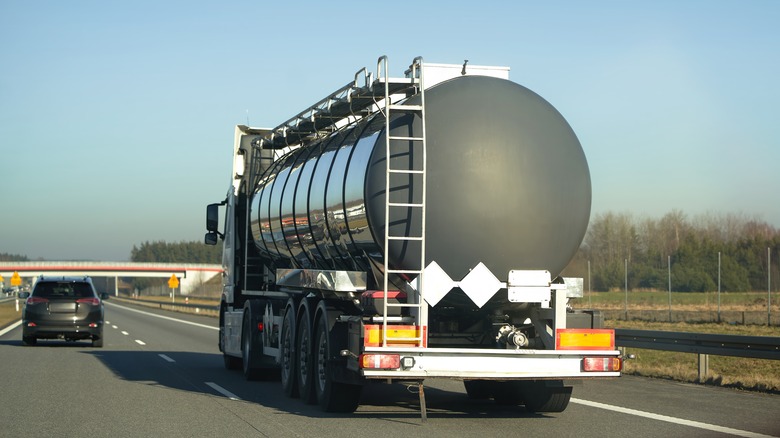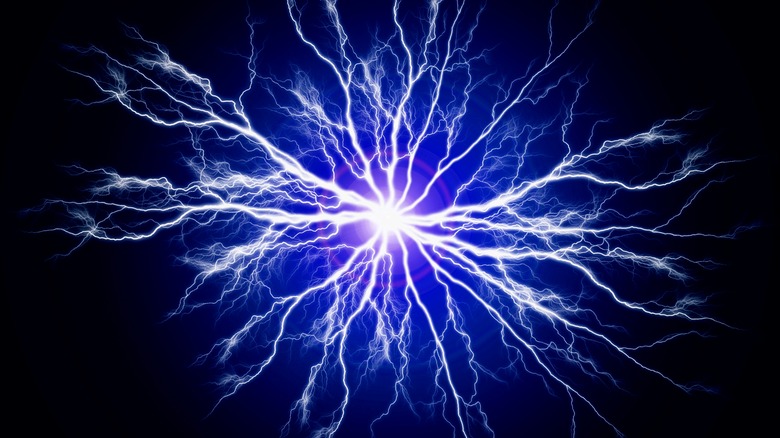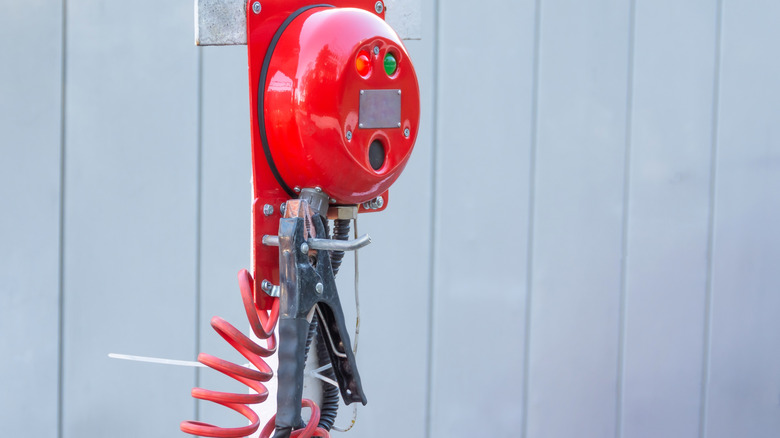What Are The Chains On The Back Of Tankers For?
We may receive a commission on purchases made from links.
If you've ever seen a large truck driving along the highway with a massive, specialty tanker attached to the rear, you may have noticed a few unusual qualities that set it apart from other large trucks. We're not just talking about the rounded, cylindrical fuel tank, but rather a certain something underneath it. Specifically, the small metal chain that seems to be dragging along on the road behind it.
The obvious explanation is that this chain is for hitching or towing, not unlike the tow hitch you'd find on a car. If you wanted to tow something with a truck, though, it wouldn't make sense to use such a small, relatively flimsy chain to do that. In actuality, this chain has nothing to do with pulling things, and in fact, its end doesn't even have a hook or hitch that could do that. Rather, the purpose of this chain is to prevent the highly flammable substances that the tanker is carrying from igniting and blowing the whole highway up. How can a little metal chain do that? Simple: it's all about dispersing static electricity.
The chain prevents static electricity from building up
Let's assume there's a large tanker truck on the highway, transporting a big haul of gasoline. Obviously, gasoline is extremely flammable, but the purpose of the tank is to keep that gasoline away from any errant sparks. While the fuel is safe from external sparks, though, there's an ever-present risk of sparks occurring on the inside of the tank, caused by the movement of the fuel itself.
As the truck rolls along the road, subtle movements gradually build up static electricity, whether it's from friction with the pavement or the fuel sloshing around and brushing against the inside of the tank. It's not a lot of electricity, but you don't need a lot to make a single, potentially disastrous spark. In order to prevent an explosion, this electricity needs to be safely dissipated. It can't be dissipated through the wheels, though, because they're made of rubber and don't conduct electricity.
This brings us to the little chain. By running a metal chain from the tank to the ground, it creates a small avenue for any accumulated static electricity to safely escape from the truck. These chains are deliberately made small and with rounded ends so they can't strike the pavement and make sparks of their own. As long as the chain is in contact with the ground, the truck is grounded, reducing the chance of any static sparks setting off an explosion.
Newer trucks may replace or supplement the chain with other grounding options
Now that you know what the little chain is for, you may be surprised if you drive behind a tanker truck that doesn't have one. Should you be worried about the tank exploding if it doesn't have a chain? Thankfully, no, as many modern tanker trucks have found other ways to safely remove any accumulated static electricity.
In a similar vein to the metal chains, some trucks may use static discharge strips. These are similar in concept to the chain, hanging off the back of the truck and dragging slightly along the ground. The difference is that they're made of a combination of rubber and conductive metals like copper, which helps make them a little more durable than a naked metal chain. You can even buy one of these for yourself on Amazon.
In addition to hanging discharge tools like the chain and strips, fuel depots and other similar installations may have special discharge points set up for tanker trucks making their deliveries. When the driver parks the truck, they take a metal clamp from one of these points and attach it to the truck, allowing any accumulated static electricity to escape into a sealed junction box. This ensures there won't be any errant sparks while loading or unloading fuel. It's a similar principle to grounding yourself before touching the metal parts of a computer.


